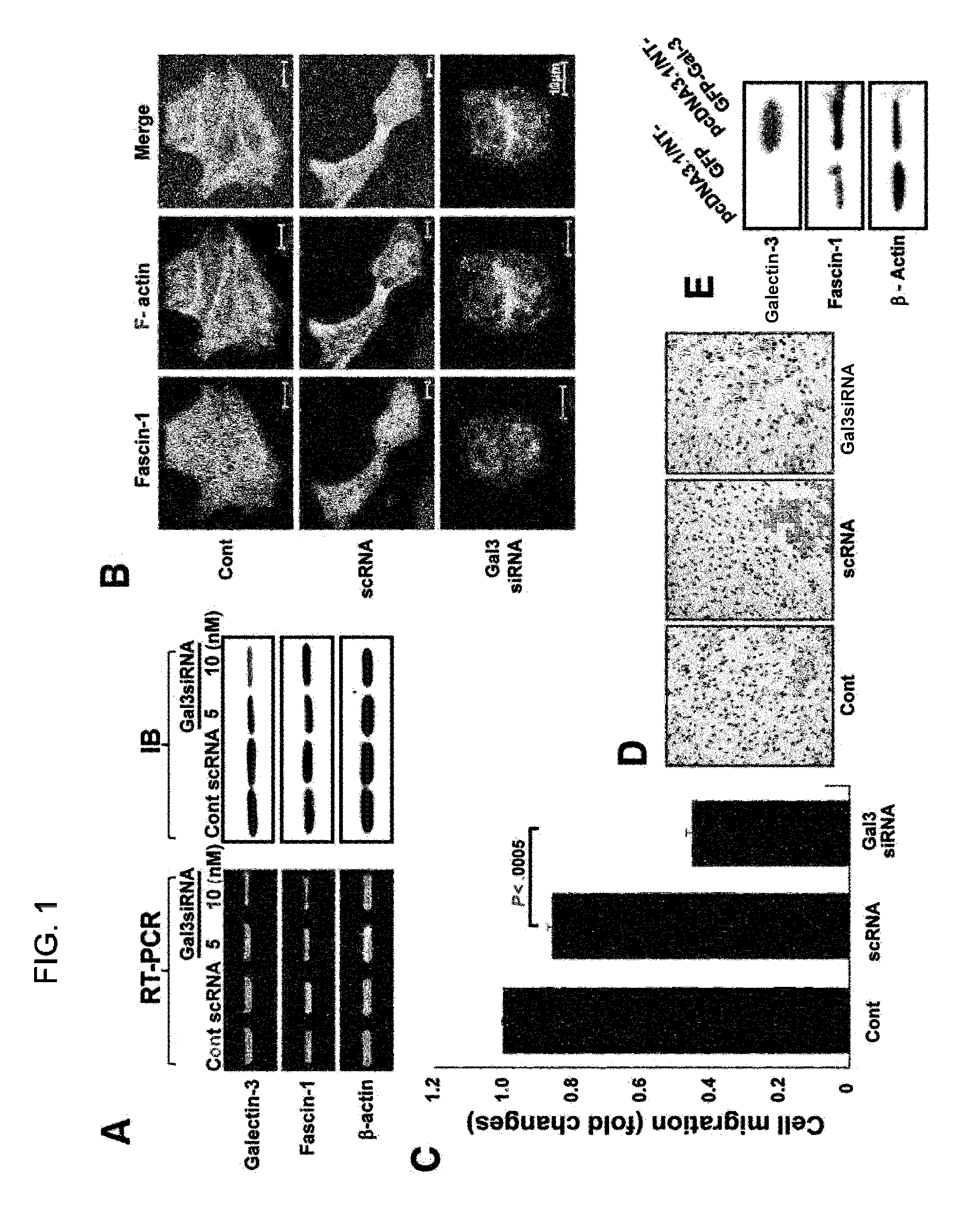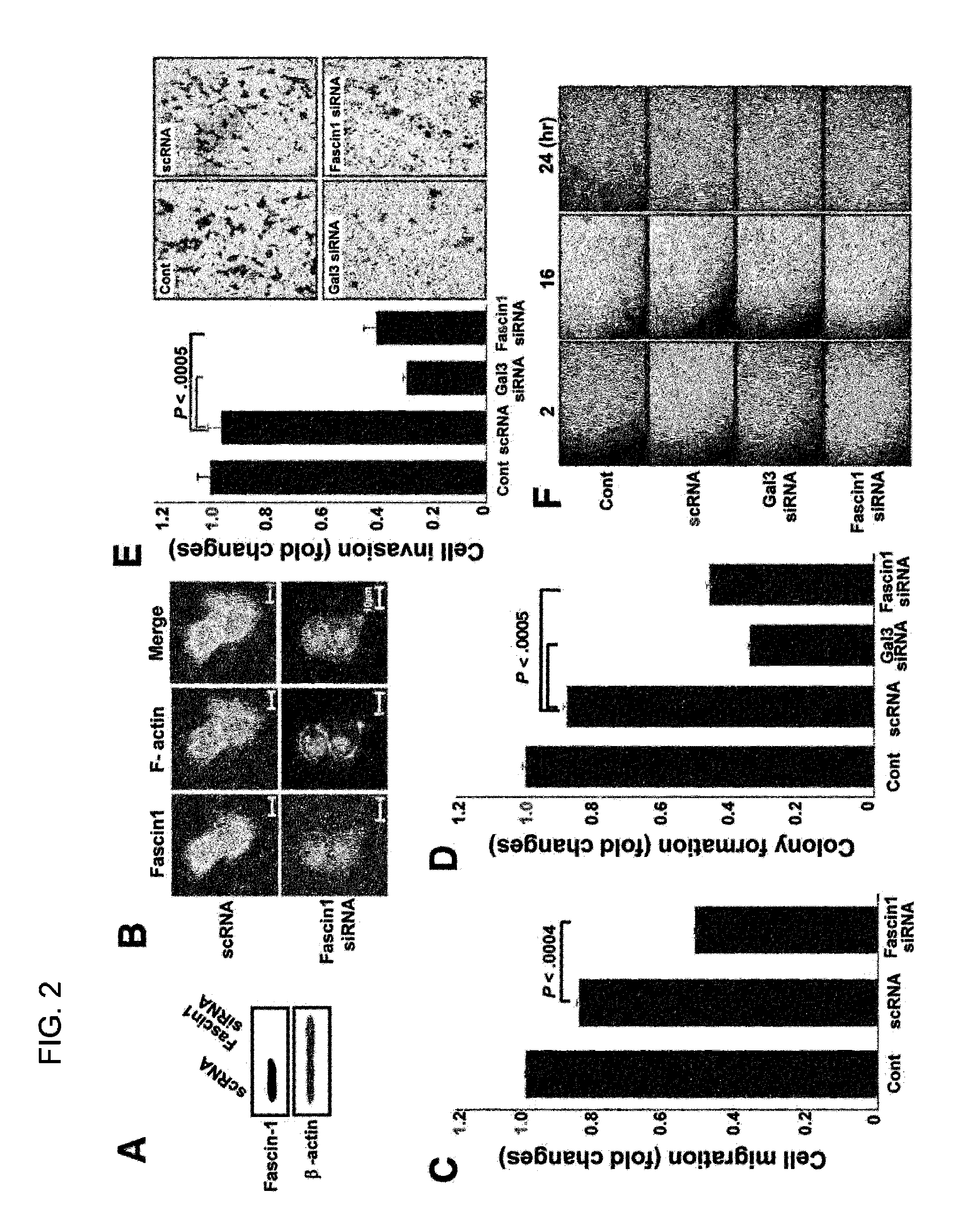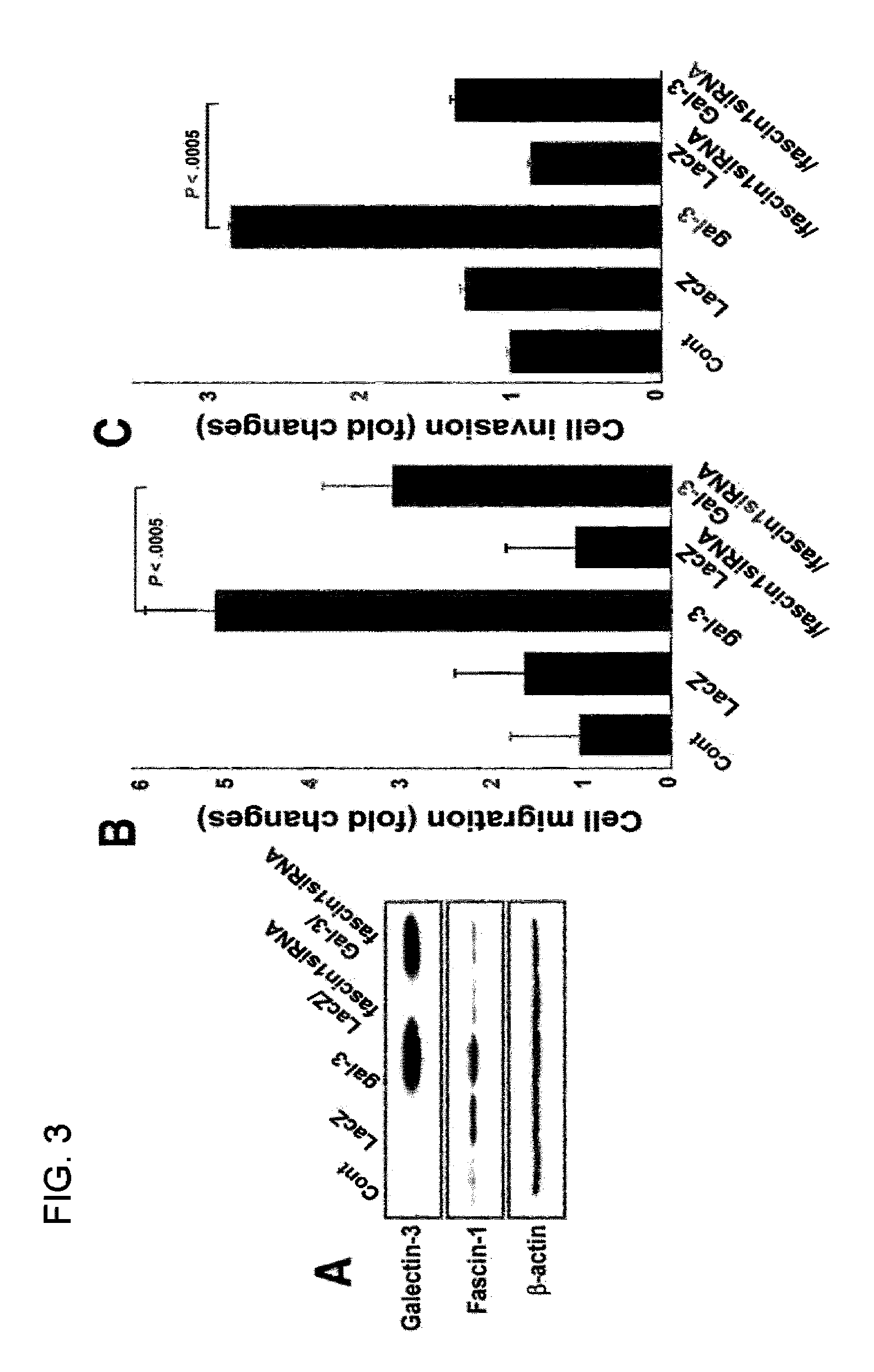Method for screening cancer therapeutic agent using galectin-3, GSK-3β, and fascin-1
a cancer and galectin technology, applied in the field of cancer therapeutic agents, can solve the problems of increasing the mortality rate of gastric cancer, reducing and limited resection area, so as to increase the motility of gastric cancer cells and reduce the expression level of fascin-1
- Summary
- Abstract
- Description
- Claims
- Application Information
AI Technical Summary
Benefits of technology
Problems solved by technology
Method used
Image
Examples
example 1
Materials and Methods
[0057] Cell Culture and Transfection
[0058]Human stomach cell lines were purchased from the Korean Cell Line Bank and maintained in RPMI 1604 supplemented with 5% fetal bovine serum (FBS) and 1% antibiotics. Galectin-3 and fascin-1 siRNAs (galectin-3 siRNA 5′-AUAUGAAGCACUGGUGAGGUCUAUG-3′, SEQ ID NO. 1; and fascin-1 siRNA 5′-UCCAGCAAGAAUGCCAGCUGCU ACU-3′, SEQ ID NO. 2) were obtained from Invitrogen and transfected transiently into cells using Lipofectamine RNAiMAX (Invitrogen) according to the manufacturer's instruction. 2 days after the transfection, the cells were harvested.
[0059] RNA Isolation and Reverse Transcription PCR
[0060]Total RNA was isolated from malignant and normal gastric tissues of gastric cancer patients in the National Cancer Center of Korea. RNA isolation was performed using TRIzol reagent (Invitrogen) according to the manufacturer's instructions. For this, a reverse transcription PCR system (Promega) was employed in the presence of primer sets ...
experimental example 1
Silencing of Galectin-3 Reduces Cell Migration and Causes Changes in the Morphology of Human Gastric Cancer Cells
[0075]The expression levels of galectin-3 and fascin-1 in 10 gastric cancer cell lines were determined by RT-PCR and Western blotting (FIG. 9). The expression of galectin-3 was high in 8 of 10 cell lines, and the expression of fascin-1 was high in 6 cell lines. To examine the effect of galectin-3 on fascin-1, galectin-3 was silenced with its siRNA in MKN-28 cells, which strongly express both galectin-3 and fascin-1. Galectin-3 silencing by siRNA resulted in a reduction in the expression levels of mRNAs and proteins of both galectin-3 and fascin-1 (FIG. 1A). The localization of F-actin, bundled and arranged by fascin-1, appeared at cell-cell contact areas, and at protruded edge areas in the untransfected, or scrambled siRNA (negative control) transfected, MKN-28 cells (FIG. 1B). However, fascin-1 expression diminished in the cytosol, and F-actin appeared only at cell-cell ...
experimental example 2
Galectin-3 Promotes Motility of Human Gastric Cancer Cells Through Up-regulation of Fascin-1 Expression
[0078]Fascin-1 siRNAs were employed to examine whether a decrease in fascin-1 expression reduces cancer cell motility. Fascin-1 siRNAs reduced fascin-1 expression in MKN-28 cells (FIG. 2A), and decreased the migration of fascin-1-silenced cells (FIG. 2B). The morphology of fascin-1-silenced cells was changed to a round shape without spikes, and F-actin appeared only in cell-cell contact areas, as happened with galectin-3-silenced cells (FIG. 2C). We also determined the effects of galectin-3 or fascin-1 silencing on cell invasion, colony formation, and wound healing as well as cell migration (FIGS. 2D to 2F). As expected, galectin-3 or fascin-1 silencing significantly reduced all of these phenomena.
[0079]An examination was made into whether galectin-3 regulates cell motility and invasion in relation to fascin-1 expression. In this regard, a galectin-3-containing lenti-virus construc...
PUM
| Property | Measurement | Unit |
|---|---|---|
| length | aaaaa | aaaaa |
| morphology | aaaaa | aaaaa |
| concentrations | aaaaa | aaaaa |
Abstract
Description
Claims
Application Information
 Login to View More
Login to View More - R&D
- Intellectual Property
- Life Sciences
- Materials
- Tech Scout
- Unparalleled Data Quality
- Higher Quality Content
- 60% Fewer Hallucinations
Browse by: Latest US Patents, China's latest patents, Technical Efficacy Thesaurus, Application Domain, Technology Topic, Popular Technical Reports.
© 2025 PatSnap. All rights reserved.Legal|Privacy policy|Modern Slavery Act Transparency Statement|Sitemap|About US| Contact US: help@patsnap.com



